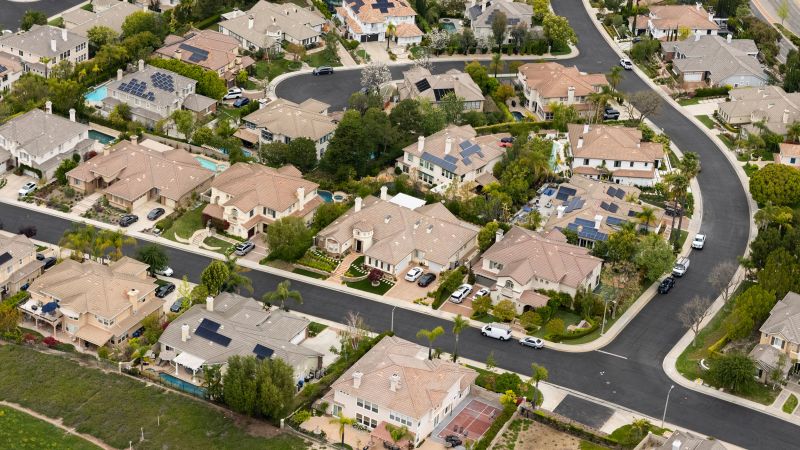Americans are currently grappling with a serious shortage of affordable homes, an issue that is set to be intensified by the mega tax and spending bill being proposed under the Trump administration. This new legislation, known as the “One Big Beautiful Bill” Act, serves as a cornerstone of President Donald Trump’s economic strategy and is primarily aimed at making the tax cuts instituted during his first administration in 2017 a permanent fixture. Recently passed by House Republicans, the bill awaits deliberation in the Senate, where numerous assessments have flagged it for its potential to further push many Americans off Medicaid and essential food assistance programs. Notably, the act is projected to add trillions of dollars to the national debt over the next decade.
While the bill comprises over 1,000 pages, it harbors several tax modifications related to housing, which could either improve affordable housing options or complicate the situation further. A set of amendments within the bill is designed to provide tax breaks to homeowners in higher-cost states, yet critics have raised concerns that it may favor wealthy buyers and powerful landlords. A provision preventing local governments from regulating rent-setting algorithms for the next decade has garnered significant attention, potentially undermining protections for lower-income renters. According to Andy Winkler, director of housing and infrastructure at the Bipartisan Policy Center, the bill was not explicitly designed as a housing bill; however, if certain provisions are enacted, they could significantly impact housing supply, preservation, and affordability.
One alarming statistic highlights America’s pressing housing dilemma: a Zillow analysis indicated that as of 2022, the U.S. faced a shortfall of 4.5 million homes. Figures such as these underscore the urgency surrounding the housing crisis, given that nearly half of American households currently allocate over 30% of their income on rental or mortgage payments, classifying them as “cost-burdened” per the definition from the U.S. Department of Housing and Urban Development (HUD). In an effort to address this crisis, the House version of the proposed bill extends and expands the Low-Income Housing Tax Credit (LIHTC), a federal initiative that incentivizes private investment in affordable rental housing for low-income tenants. The bill includes a temporary increase in LIHTC allocations and reduces the threshold of government-issued bonds developers must acquire to qualify for federal tax credits, potentially facilitating the financing of an estimated 527,700 additional affordable rental homes between 2026 and 2035.
Furthermore, the bill raises the State and Local Tax (SALT) deduction cap, allowing high-tax states like New York and California to deduct larger amounts from their federal tax bills. Experts like Jim Tobin, CEO of the National Association of Home Builders, argue that enhancements to LIHTC and the SALT deduction, along with amplified tax benefits for small businesses, will markedly benefit homebuilders. Tobin believes this legislation will provide much-needed certainty in taxation, essential for nurturing continued economic growth, especially pertinent to the housing industry.
However, the proposal contains elements that may raise eyebrows, particularly concerning a provision that obstructs states from regulating artificial intelligence models, including algorithms used for setting rents. This aspect has led to pushback from attorney generals across several states urging Congress to dismiss this provision, citing its destructive potential for local efforts aimed at preventing adverse outcomes associated with AI.
Despite being a small segment within a broader bill projected to increase the national debt by $2.4 trillion over the next decade, the housing-related provisions may still have significant implications. Economists warn that the escalating national debt is likely to result in higher interest rates. The government’s need to borrow funds to meet its obligations through Treasury bonds will compel investors to seek greater compensation for perceived risks, thus leading to increased borrowing costs for prospective homeowners and homebuilders. At a time when average mortgage rates already hover near 7%, any uptick in borrowing rates could further complicate the pursuit of homeownership for many Americans.
The impact of these monetary dynamics on housing demand cannot be overstated. Winkler emphasizes that these financial aspects are crucial in determining homeowners’ purchasing capability and the feasibility of new construction projects. In addition to the proposed debt-inducing measures, the White House’s recent budget proposal aims for significant cuts to housing-related programs, a move that David Dworkin, president of a nonprofit advocating for affordable housing, expresses apprehension about. He hopes that Congress will challenge these proposed cuts aimed at housing programs while acknowledging the need for early dialogue with the administration to reconcile differing views on housing affordability initiatives. Dworkin remains optimistic that the emphasis on housing affordability, signaled by initial actions taken by the Trump administration, will endure amidst ongoing budget discussions.



